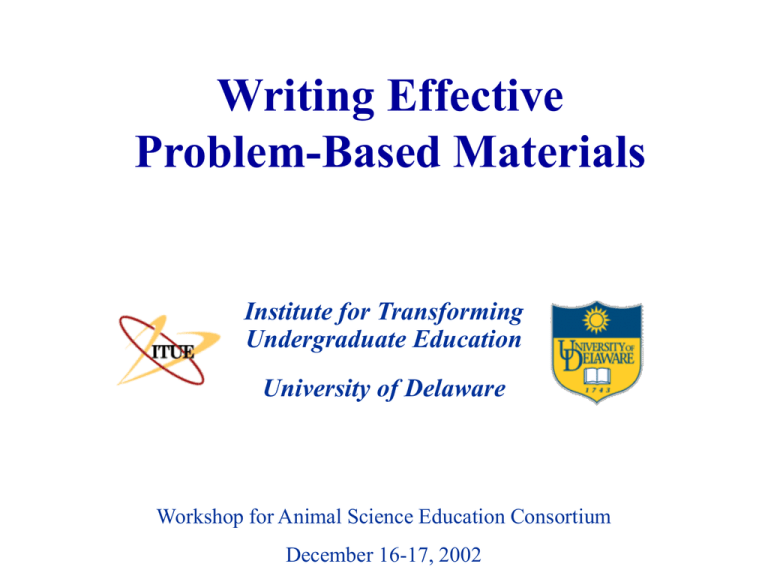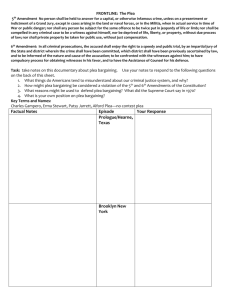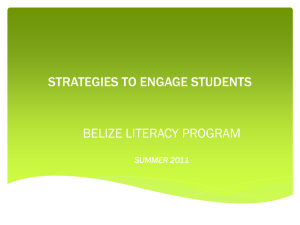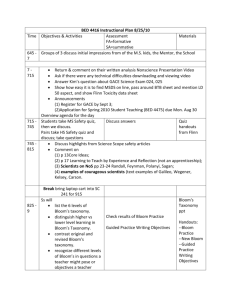Good PBL Problems… - University of Delaware
advertisement

Writing Effective Problem-Based Materials Institute for Transforming Undergraduate Education University of Delaware Workshop for Animal Science Education Consortium December 16-17, 2002 Good PBL Problems… • • • • • relate to real world, motivate students require decision-making or judgments are multi-page, multi-stage are designed for group-solving pose open-ended initial questions that encourage discussion • incorporate course content objectives, higher order thinking Bloom’s Cognitive Levels Evaluation Synthesis Analysis Application Comprehension Knowledge Bloom’s Knowledge Level Memory; Recall of factual information. Examples: Who is ____? When was ____? Describe _____. How did _____? Bloom’s Comprehension Level Understanding; Interpretation. Examples: Demonstrate the meaning of ____. Give an example of ____. Translate that idea into everyday terms. Bloom’s Application Level Apply learning to new situation; Generalization. Examples: Apply the formula to this problem. Teach your friend the meaning of ___. Bloom’s Analysis Level Break down material and distinguish parts, relation to whole. Examples: Distinguish facts from unsupported assumptions. Identify relevant issues in a problem. Bloom’s Synthesis Level Put together elements to form a new whole. Examples: Design a web site for your course. Write a play or story that illustrates ____. How would you create ____? What is the solution to the problem? Bloom’s Evaluation Level Critique; Evaluate. Examples: Assess a decision of the Supreme Court in light of ____. Write a critique of a scientific theory; What are its strengths and weaknesses? Bloom’s Cognitive Levels Evaluation - make a judgment based on criteria Synthesis - produce something new from component parts Analysis - break material into parts to see interrelationships Application - apply concept to a new situation Comprehension - explain, interpret Knowledge - remember facts, concepts, definitions Important Considerations in Writing Problems • Level of course and maturity of students • Role of problem in accomplishing course objectives • Time frame • Staging • Availability and access to learning resources • Use of prompting questions Step One: Identify Learning Objectives Think of a learning objective in your course. How do you usually address this learning objective? What kind of problem or activity do you usually assign? – Typical end-of-chapter problem? – A reading? – Other? Solving Problems Using Conservation of Momentum Traditional examples: • Pool balls colliding • Bullets hitting blocks of wood Traditional End-of-Chapter Problem A 1500-kg car traveling east with a speed of 25 m/s collides at an intersection with a 2500-kg van traveling north at a speed of 20 m/s. Find the direction and magnitude of the velocity of the wreckage after the collision, assuming that the vehicles undergo a perfectly inelastic collision (ie, they stick together). Serway and Faughn. 3rd ed. College Physics, Saunders, 1992. Understand Phenomenon of Plea Negotiation Central concept in class on courts – Most cases resolved through plea bargains – Relates to other central course material • Attorney and litigant roles, charging, sentencing Traditional approach – Stand and deliver lectures – Emphasis on facts of plea bargaining Step Two: Identify Real-World Context Name a realistic application of the concept. Outline a scenario. Ideas: • Add story-telling to end-of-chapter problem. • Add motivation, require students to go beyond rote learning, do research. • Include decision-making. • Other? A Real Traffic Accident • Based on police sketch • Students need to make assumptions and approximate • Information given gradually throughout problem Plea Negotiation Problem Students take on roles of prosecutor, defense attorney, defendant, and victim. Students research issues and negotiate a case’s resolution. Step Three: Draft the Problem Outline the problem. What will be on the first page? Suggestions: • Good PBL problem has multi-page, multi-stage construction - leave students guessing! • Not all information given in chapter or text students look for resources. • Challenge students to come to consensus, reach conclusions, and make judgments. John Henry - Traffic Cop Stage 1: What questions need to be answered? What measurements, data? What physics principles? Then initial introduction to momentum. Stage 2: Sketch given, some information given; students analyze and ask questions. Stage 3: Outline procedure, make assumptions, Apply concepts. Stage 4: Make judgment and rationalize decision based on physics principles Activities Related to John Henry • Students summarize each stage before moving to next. • Final stage written up by group with complete analysis. First Page of the Plea Negotiation Problem Problem: Sam Sad drank an undetermined number of beers, then began to drive home. He ran a red light and hit another car head-on, killing one person and injuring the driver. The driver had a miscarriage shortly after the accident. Sam was arrested. Questions for group discussion: • What legal issues and evidence will be important? • What do you need to learn to negotiate a resolution to this case? Stages of Plea Negotiation Stage 1: Students are formed into groups, learn about case facts Stage 2: They choose roles, identify negotiation priorities and resources, research law Stage 3: Prosecution team makes initial charge, and negotiation begins Stage 4: Groups arrive at plea agreement, write up group report of negotiations






